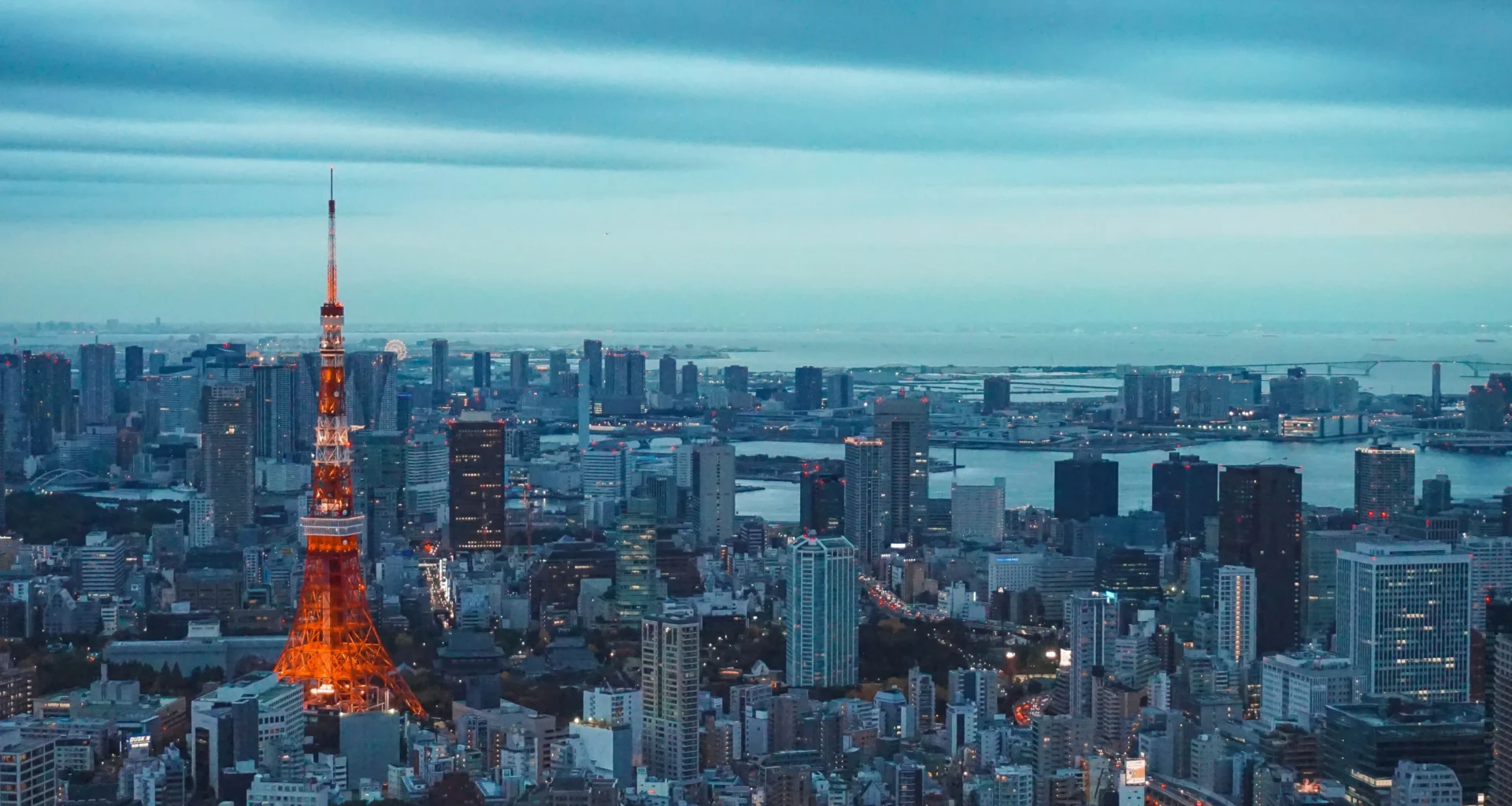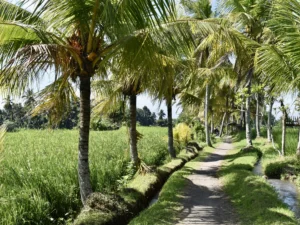Japan is a country full of surprises. With 2 weeks in Japan, you will have enough time to discover many faces of the Japanese culture with this itinerary of 14 days. Here, we will see how to organize your trip to Japan, the different cities to visit, how to take the train, how to handle payments, and all the practical information to make your trip to Japan successful.
14-day itinerary to visit Japan
With 2 weeks in Japan, let’s start our itinerary in Tokyo. There are many flights to and from Tokyo, so booking your round-trip flight is the most convenient option.
Day 1 to 4: Tokyo
Accommodation. Tokyo is a vast, sprawling city. Public transportation is quite developed, but it can quickly take over an hour to reach certain places to visit. That’s why it’s crucial to choose your hotel wisely, ideally located between the places to visit and the places to eat. The main areas to recommend are Shinjuku, Ginza, and Shibuya. Be sure to check all our advice on choosing your Tokyo hotel.
This example itinerary for visiting Tokyo in Japan can be modified depending on where you are staying. You can also find other places to visit in Tokyo here.
Day 1: Arrival in Tokyo
Jet lag. Depending on where you are arriving, you can have up to 9 hours of jet lag. That’s a lot. It is often considered that the body can catch up to 1 hour of time difference per day. To make the most of the trip, try to wake up and go to bed earlier to adjust to Japan time.
Walking tour. If you have time and are not too tired from the trip, take the opportunity to walk around the neighborhood. Shinjuku, Ginza, and Shibuya are all interesting quarters to visit. Let’s start discovering Tokyo while staying close to where you’re staying. Don’t add too much to your itinerary on the first day because you still have 2 weeks in Japan.
Day 2: Meiji-Jingu, Shinjuku
Meiji-Jingu. We start our discovery of Tokyo with its most beautiful Shinto shrine: Meiji-Jingu. It is in the middle of a park, so it’s enjoyable and free. Plan for about 1 hour and 30 minutes to visit this shrine. More information is on the official website.
Harajuku. The simplest way to leave Meiji-Jingo is to go to Harajuku station to the south. You can take the opportunity for a little tour of this exciting district. Before, we even spoke of a Harajuku style to talk about Japanese eccentricities such as cosplay, “Gothic Lolita” or “Gyaru.” It is much less accurate nowadays.
Shinjuku. It’s one of the most lively, dynamic districts of Tokyo. You’ll find everything in Shinjuku: restaurants to eat, game arcades, bars, and shops. You can take the opportunity to go to a Japanese hot pot restaurant, shabu-shabu, at Nabezo Shinjuku Meiji Dori.
Imperial Garden. It’s a beautiful Japanese garden right next to Shinjuku. It’s gorgeous and very relaxing. You can have a tea break in a beautiful setting. There is an entrance fee.
Shibuya. If you visit quickly, you can also choose to go to Shibuya. It’s fast from Shinjuku or Harajuku. You’ll be able to see the legendary intersection with its crosswalks in all directions and the statue of the loyal dog Hachiko. You can also enjoy a panoramic view of Tokyo from Shibuya Sky (see photos).

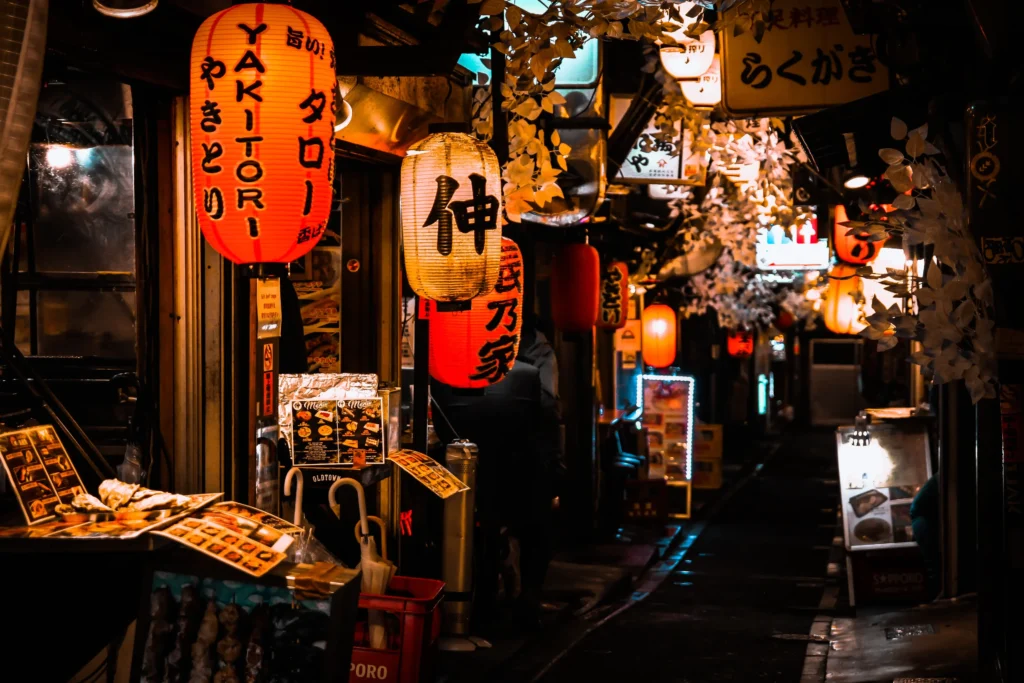
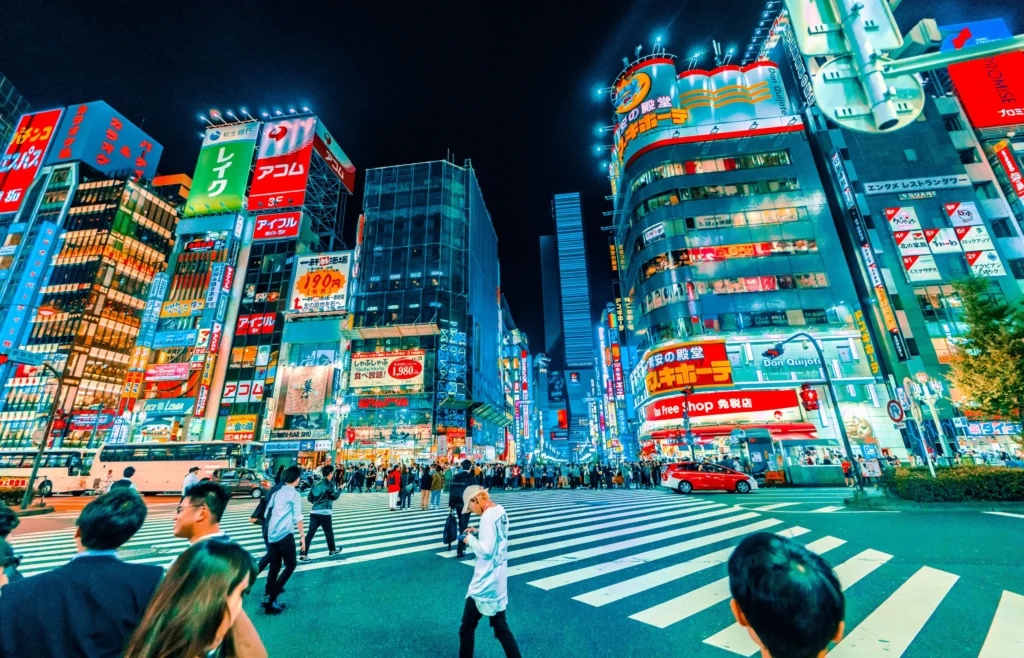
Day 3: Asakusa, Senso-ji, Tokyo SkyTree, Akihabara
After the modernity of a day in Shinjuku, our 14-day Japan itinerary spends a more historical day.
Asakusa. The Asakusa district is fascinating to visit. It’s an older neighborhood with more authentic buildings, a contrast with other aspects of Tokyo. You will also find many souvenir shops, ideal for some shopping.
Senso-ji is the oldest Buddhist temple in Tokyo. Admission is free. The Japanese are both Shinto (70% of the population) and Buddhist (70% of the population), and many follow multiple religions.
Tokyo SkyTree is the ideal place to get a panoramic view of Tokyo. The first viewpoint is 350 meters high, and you can buy a more expensive ticket for the second viewpoint at 450 meters. The view is already splendid from the first viewpoint. There is often a queue, so consider getting skip-the-line tickets. There is so much attendance that there is often also a queue for the skip-the-line tickets, but much less. See Tokyo SkyTree rates.
Akihabara is the district of Anime, video games, and electronics from the 1990s. It’s a luminous district with advertisements and neon signs everywhere. Lots of advertising trucks with loud music circulate here. If you’re looking for an old, broken N64 or a Master System cartridge, this is the place to come.
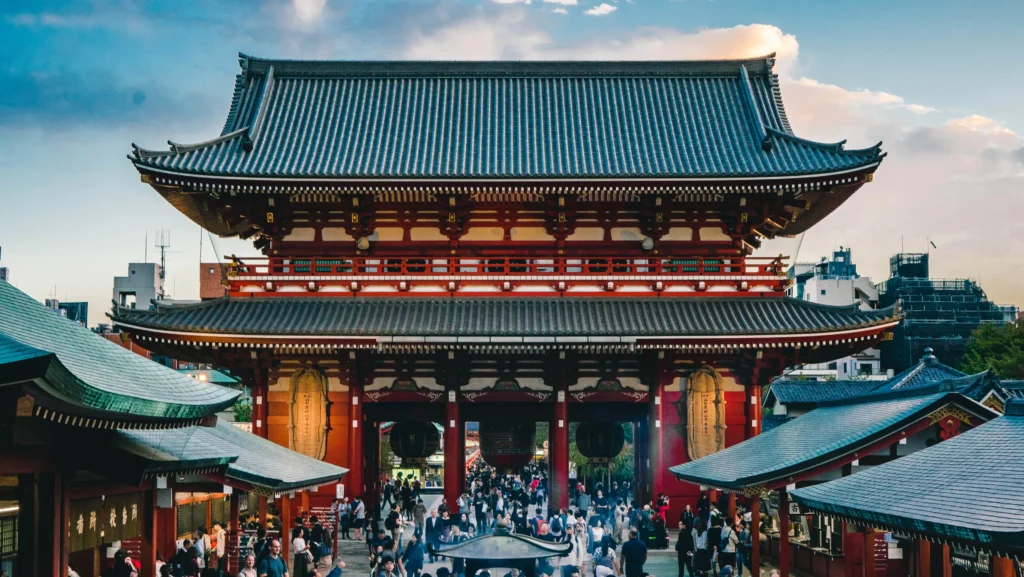

Day 4: Timelab Planets, Odaiba
Timelab Planets. This is a sensory, immersive experience. It’s often presented as a museum. All senses are stimulated. It’s mysterious and captivating. It’s best to visit it. It’s often full, so book your place several weeks in advance. Book your spot here.
Odaiba. It’s a district built on artificial islands. It’s yet another new look at Tokyo. You can get there by automated metro, cross the splendid “Rainbow Bridge”, and admire a breathtaking view of Tokyo Bay. In the foreground is a real Statue of Liberty. Like the one in New York, it was a gift from France.

Day 5 to 8: Kyoto
The 14-day itinerary in Japan continues with the discovery of Kyoto!
Accommodation. Kyoto is a charming ancient city. The atmosphere is much quieter than in Osaka or Tokyo. When coming by train, it’s most convenient to stay near the station, on the North side. See our guide for accommodation in Kyoto.
Transportation in Kyoto. Public transportation is not at all convenient for visiting Kyoto. Moreover, the sites are very far from each other, so it’s not feasible on foot. The best option is to use a Taxi.
Be sure to also check out our guide on the places to visit in Kyoto.
Day 5: Journey from Tokyo to Kyoto by Shinkansen
Shinkansen. The train to Kyoto takes about 2 hours. Arrive at least 30 minutes before the train leaves because you must be on the correct platform, in front of the right carriage, in the right queue before the train arrives. The train stays in the station for about 5 minutes before departing, so you must be quick. You can purchase a JR Pass in advance or buy a ticket at the station (See below for trains in Japan). On the route, the landscape is very urban, and the windows are tiny, like in an airplane.
Mount Fuji. The Shinkansen line skirts Mount Fuji to the South. So, take seats on the right side of the train to admire it if the weather is clear.
Fushimi Inari-taisha Shrine. There are many landmarks to see in Kyoto. So don’t waste time. Add a place to see to your itinerary because it is almost half your 2 weeks in Japan. This shrine is also called the shrine with 10,000 torii gates. Access is free and 24/7. There are a lot of visitors but the shrine is very large. You can climb to the top of the hill for more tranquility. It’s easily accessible from Kyoto station.

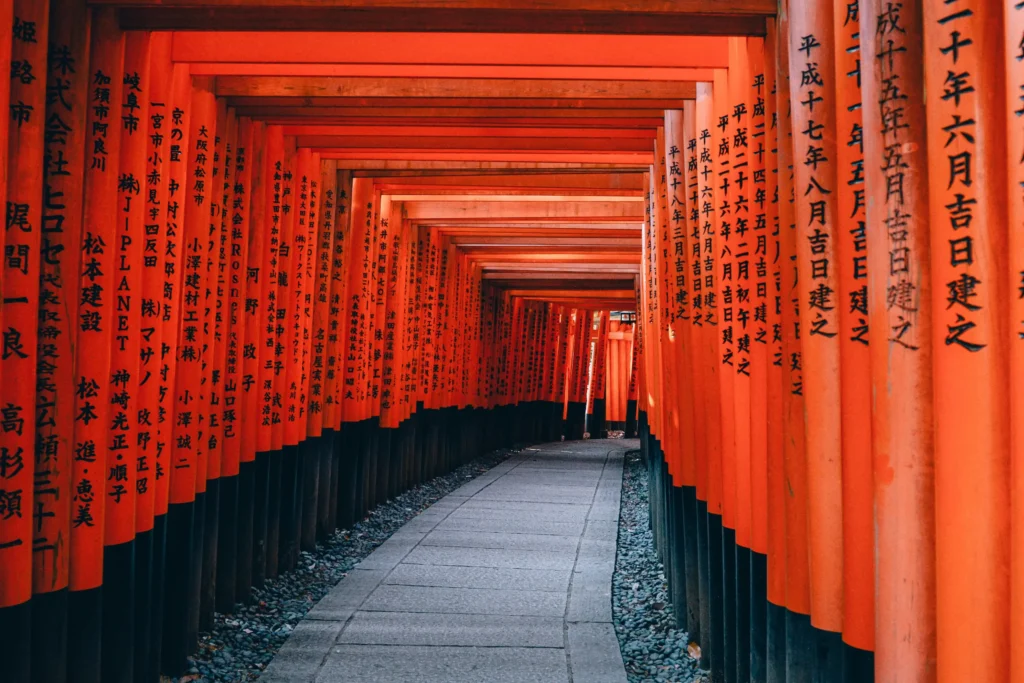
Day 6: Kyoto
Kinkaku-ji. The must-visit temple in Kyoto. It’s a temple covered in gold leaf beside a lake. The temple is spectacular, and the setting is beautiful. There are a lot of visitors because it’s the most famous temple in Kyoto. Come early in the morning or at closing time to avoid the crowds. Otherwise, the visit is very organized: we follow a marked path from beginning to end.
Ginkaku-ji. Another must-visit temple in Kyoto and Japan on our itinerary during these 2 weeks. We especially appreciate its Zen atmosphere. It’s what one imagines a temple in Japan to be: a space of well-being that stimulates introspection. The park around the temple is delightful, with a sand garden and a splendid moss garden with water and bridges. This temple is also called “the Silver Pavilion,” though it has never been covered in silver. From the heights, you can enjoy a clear view of Kyoto.
Philosopher’s Path. Going straight down from the temple, you quickly come across a small canal. You can follow this peaceful canal for about 1.5km, or around 20 minutes. It’s a charming pedestrian path with lots of trees along the way. Some benches also allow for breaks. It’s perfect for discovering the slow local life in Kyoto.
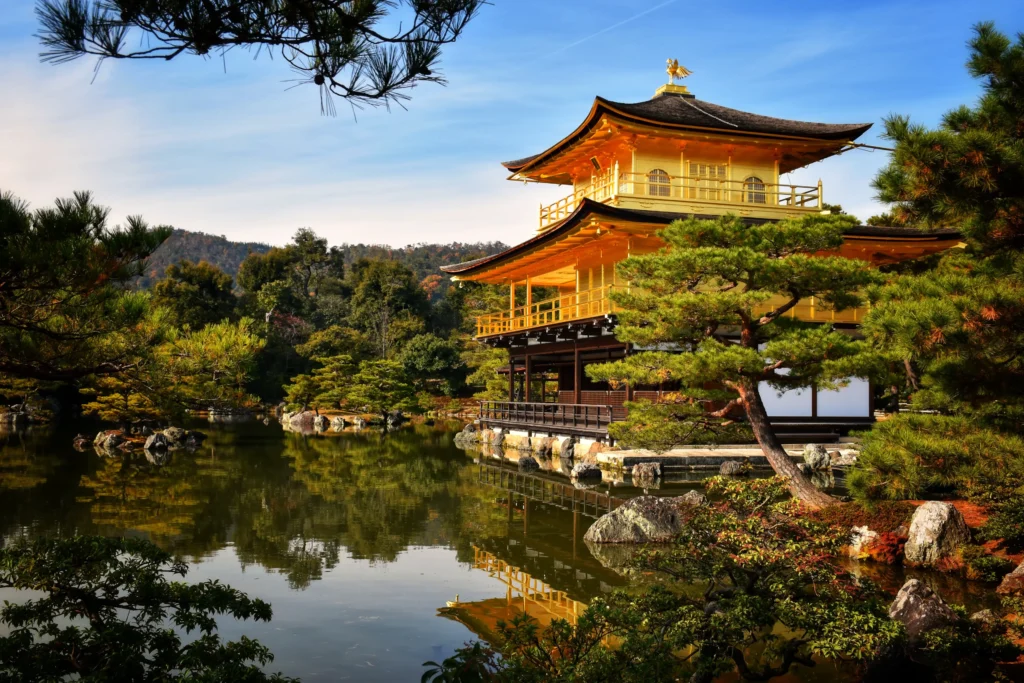
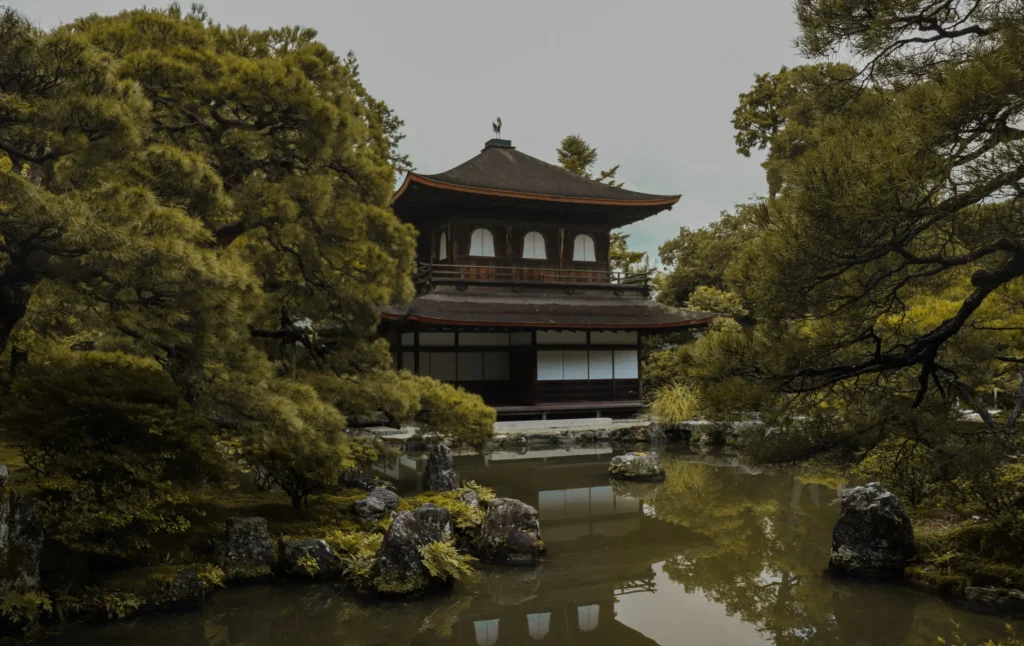
Day 7: Kyoto
Kiyomizu-dera. This large temple on the side of a hill notably has a large terrace, allowing a splendid panoramic view of the city. The vegetation is very diverse, offering beautiful colors in autumn and spring. At the base of the temple is a water source with three falls. Many visitors come to drink its water for its benefits. Each water has its meaning: love, success, longevity. But be careful not to drink all three waters, or you will end up with nothing at all!
Gion District. The district between Kiyomizu-dera and Yasaka-jinja Temple is fascinating. It’s an old historical district. The alleys are narrow and paved, and the buildings are traditional Japanese wooden houses. Even the electrical cables have been buried to improve the historic feel. Plenty of souvenir shops and small artisans sell local culinary specialties to eat on the street. It’s the old Japan, and you must add it to your itinerary during these 2 weeks.
Hokan-ji. It’s a temple with a five-story pagoda. The view of this temple from Sanneizaka street is beautiful and famous. Wooden buildings surround the alley that ends with the temple’s pagoda. It’s a beautiful sight and a must-have souvenir photo.
Starbucks. Starbucks cafes are everywhere in Japan, but this one is special. It is located in a traditional Japanese wooden house. You can drink your coffee while sitting on tatami mats, as in a Tea ceremony. It’s a unique experience. There’s often a lot of traffic, so booking in advance is mandatory if you want to sit.
Yasaka-jinja. This shrine was founded in the 7th century. It is particularly appreciated at nightfall when all the lanterns light up. It’s lovely.


Day 8: Nara
Historical capital. Nara was the first fixed capital of Japan. Before that, the capital city was moving according to the residence of the ruling leader. It didn’t last very long; the capital city was then moved to Kyoto. History tells us that Buddhism had a lot of power in Nara then and that the political power was afraid of being dominated by religion. You can understand this fear when visiting the reconstruction of the breathtaking Todai-ji temple.
Todai-ji. The most impressive structure in Japan. It’s a wooden temple dating from the 8th century, rebuilt several times over the ages. The original construction was 63m high, equivalent to a 20-story building! The building that can be seen today dates back to the 18th century and is “only” 49m. Even with 14m less, it is still imposing! It is a must-visit in Japan on a 2-week itinerary.
Nara Park. Nara Park is a must-see place. Many visitors come every day. First of all, it encompasses the Todai-ji temple and various impressive gates. Deer live freely here, and they can be approached. It is an ideal family visit, with magnificent historic buildings and activities that will please children.
Deer. You can buy special crackers made for the deer. There are many deer at the park’s beginning and near Todai-ji, fewer further on. The deer closest to humans are very tame and can be petted. However, there will be a lot of people around you. You can be alone by going further, but the deer are more aggressive, so there is no chance of touching them.
Going to Nara. It is straightforward to get to Nara from Kyoto. The D line departs from Kyoto station and is direct. The journey takes about 35 minutes. It is also possible to go from Osaka. However, the journey is a bit longer. It takes about 1 hour with the “Loop Line” and then “Yamatoji”. It’s the same train that changes lines and names at Tennoji station.

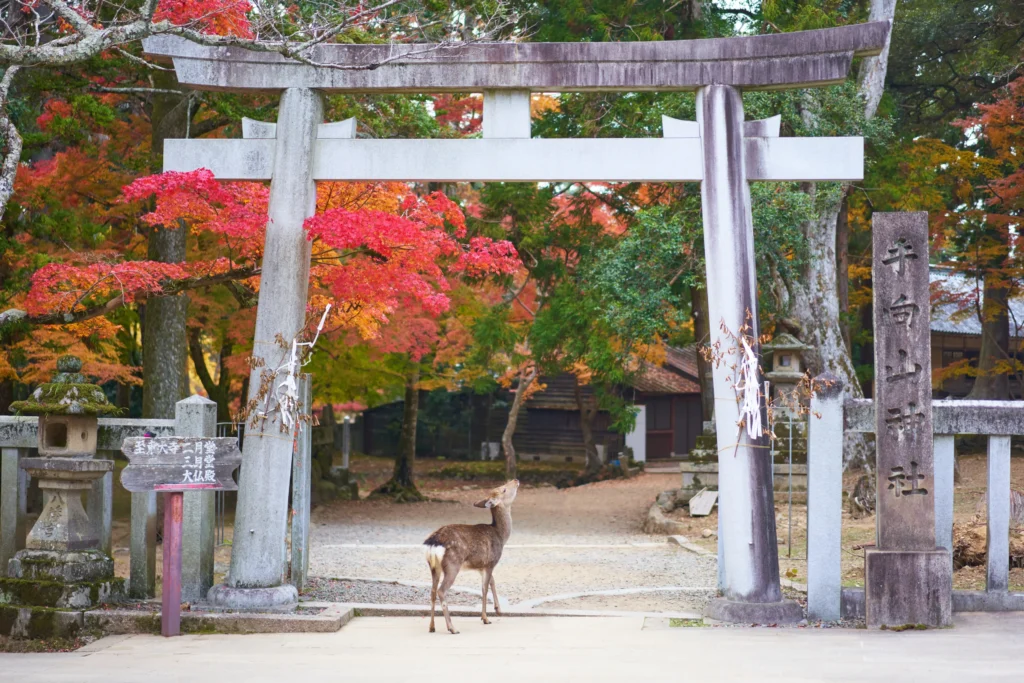
Day 9 to 11: Hiroshima
Hiroshima is infamously known for being the site of the first atomic bombing. Many Japanese come here to pay their respects every year. However, the city is also ideal for visiting Miyajima Island and the Itsukushima-jinja Shrine. It is worth visiting on a 14-day itinerary in Japan.
Accommodation. Stay near the train station because you will be arriving and departing via Shinkansen, which is quite convenient.
Day 9: Travel from Kyoto to Hiroshima
Train. The trip from Kyoto takes about 1 hour and 40 minutes by Shinkansen bullet train. Just like the journey from Tokyo, arrive early to queue before the train arrives because the stop is very brief. Along the way, the scenery remains very urban, with many tunnels.
Atomic Bombing Relic. In the city center, you will find the Peace Memorial Park. Here, there is a museum about the atomic bombing, an eternal flame, and a memorial monument. On the other side of the river is the Genbaku Dome. These ruins are symbolic of the bombing as they are one of the only structures that remain standing. There is an alignment between the memorial monument, the eternal flame, and the Genbaku Dome.
Bombing Museum. The museum is not recommended for children. It exhibits photos displaying the consequences of the bombing during the war.
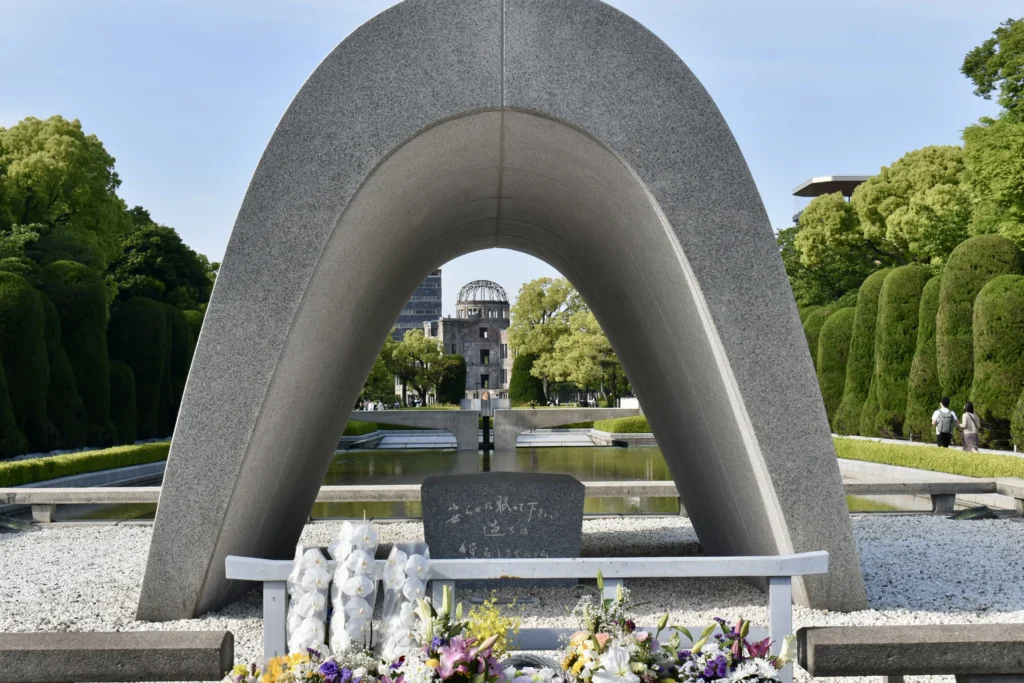
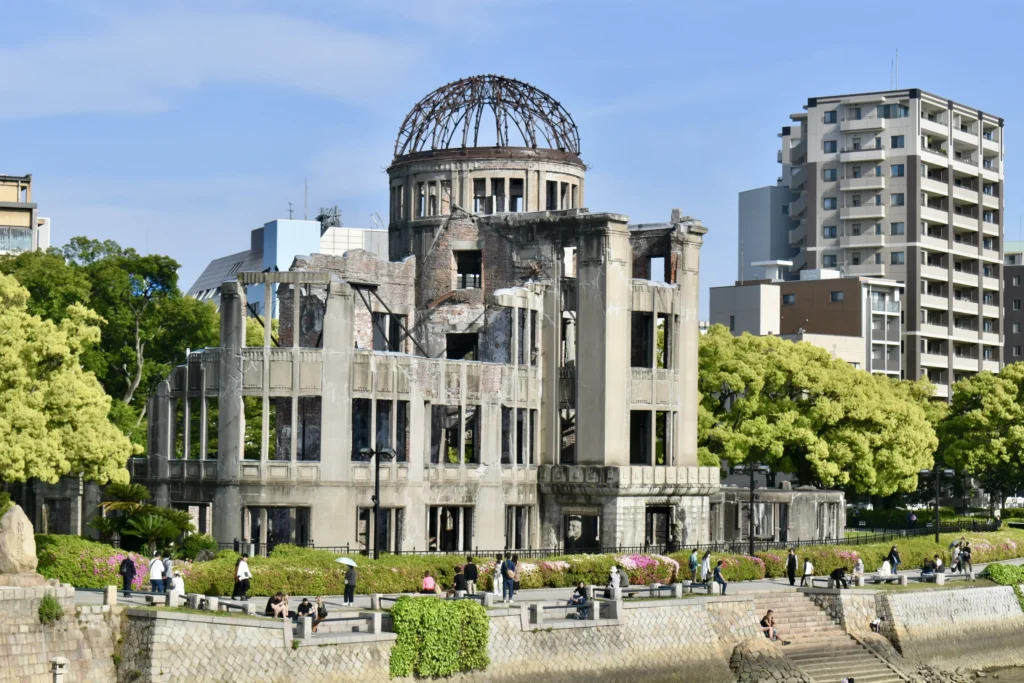
Day 10: Miyajima and Itsukushima-jinja Shrine
Itsukushima. This island is also known as Miyajima. It is a preserved island and a major religious site. You can sense this mystical atmosphere as soon as you move away from the crowds. The island can be explored by small trails or by staying in the inhabited area near the port. A cable car offers a panoramic view from the top.
Tori in the Water. The must-capture photo of Miyajima is the torii gate in the middle of the water. This is only possible at high tide. The torii stands in the sand at low tide, and hundreds of visitors gather around it.
Travel to Miyajima Island. Ferries depart from downtown Hiroshima, near the Genbaku Dome. The boats are quite old, and the ride can be uncomfortable. Most visitors and Japanese take the train to Miyajima-guchi Station (30 minutes), then a short ferry that crosses the shortest distance (15 minutes).
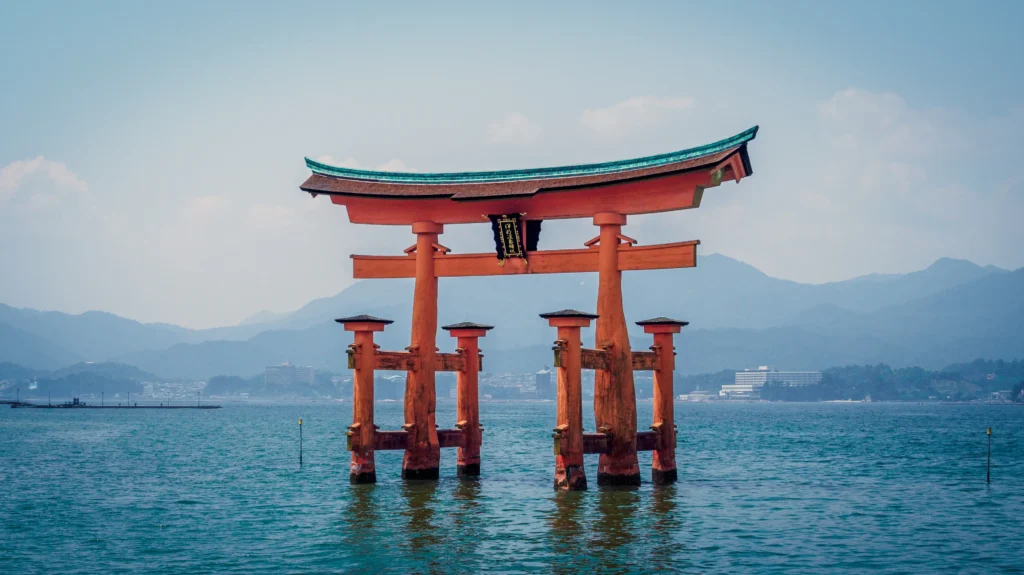
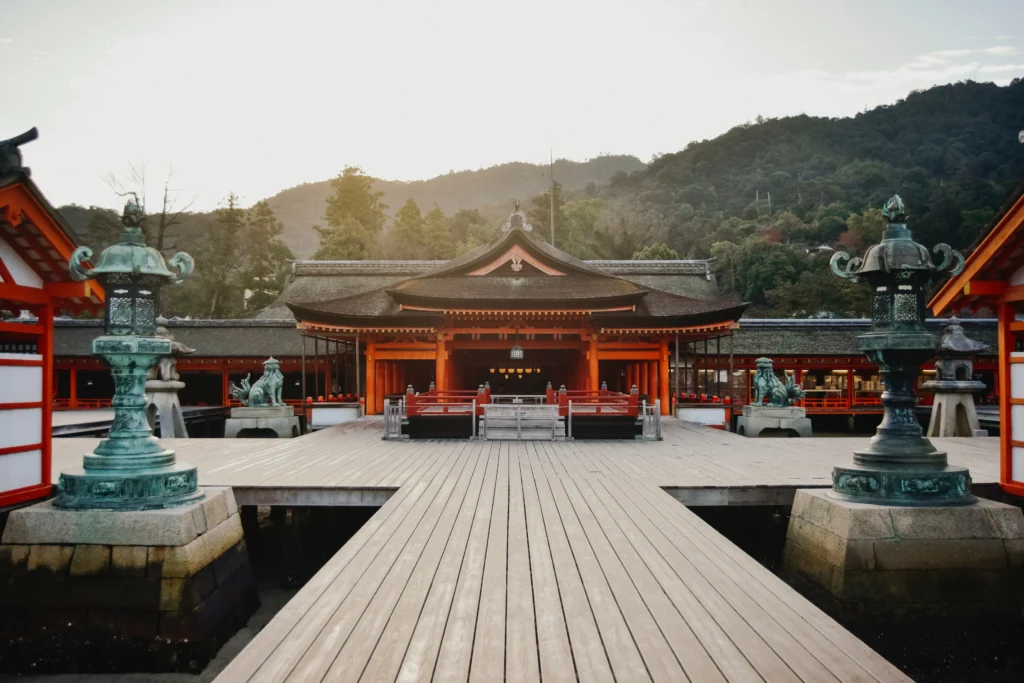
Days 11 and 12: Osaka
Before concluding our 2-week itinerary in Japan, let’s discover another face of Japan in Osaka.
Osaka is a city very different from the others in Japan. You will immediately feel a different vibe. Osaka’s must-sees are the famous Glico Running Man and the Namba area around the canal, the castle, the Shinsekai district, and the Tsutenkaku Tower. In Japan, Osaka is recognized as a gastronomic destination. People come here to eat local specialties not found elsewhere in Japan. See our detailed article on visiting Osaka.
Accommodation. For once, it is better to avoid staying near Shin-Osaka station. It is pretty far from everything else. Instead, choose the Umeda area near the central station or Namba near Dotonbori. See the best hotels to stay in Osaka.
Day 11: Travel from Hiroshima to Osaka
Shinkansen. You should be getting used to it by now, right? Allow 1 hour and 30 minutes to go from Hiroshima to Osaka. There are two stations in Osaka: Shin-Osaka, the bullet train station, and the central Osaka “Umeda” station. Several trains make the connection between the two very quickly. You can also take a taxi from Shin-Osaka to reach your hotel.
Dotonbori. This is where the most entertainment is at night. Dotonbori is both the canal and the street. There are many neon signs, and several restaurants also have mechanical signs, like the moving crab legs. It is an ideal place to taste local delicacies, enjoy the evening attractions, and keep going all night long.
Glico Running Man. The symbol of Osaka, the Glico Running Man is an advertisement for the biscuit and candy brand Glico. The billboard was installed here in 1935 and has been updated several times. The current version, the sixth version, dates from 2015.
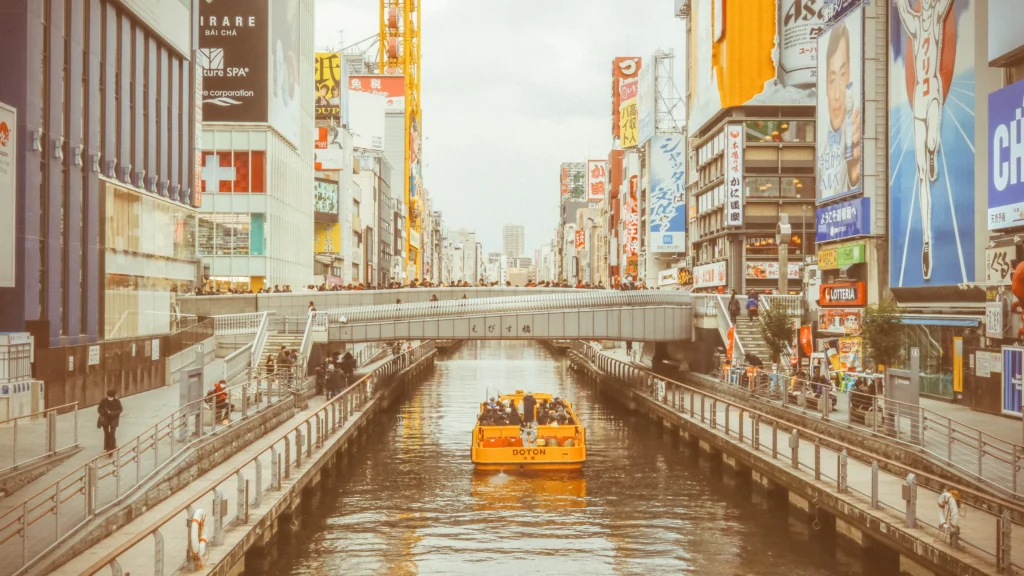
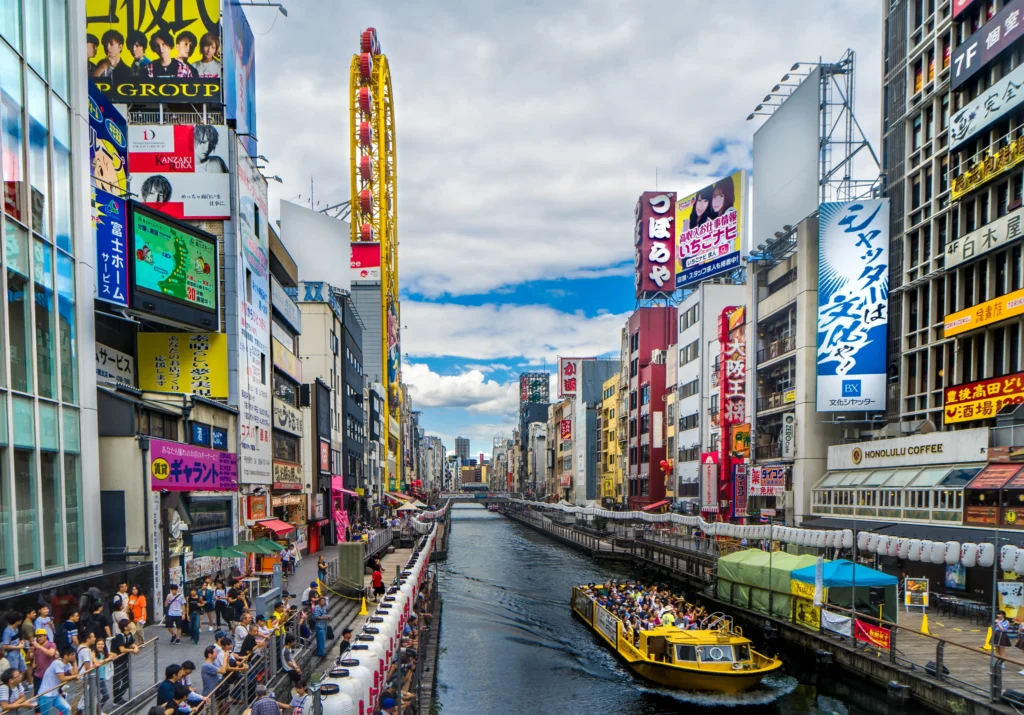
Day 12: Osaka
Osaka Castle. Osaka Castle is the finest example of a Japanese castle, much better than Hiroshima or Kyoto’s castles. It was initially built in 1583, but what stands today dates from 1997. You can climb into the castle for an impressive view of the city. The visit is delightful, with the beautiful park all around. It is perfect for taking a stroll with the family or for couples.
Tsutenkaku and Shinsekai. The Tsutenkaku Tower is another emblem of Osaka, particularly when it lights up at night. Shinsekai means “New World.” This district was built with this concept: a new, dynamic neighborhood at the beginning of the 20th century. It has changed a lot since then, including the Tsutenkaku Tower, which was replaced in 1956. Today, it is a vibrant district all around the tower, with restaurants that have original and colorful facades. It is a great neighborhood to visit in Osaka and Japan.
Shi Tennō-ji. It is one of the oldest Buddhist temples in Japan, dating back to 593. It has, of course, been destroyed multiple times and rebuilt identically. What we see today dates from 1963. It is a magnificent temple to see in Japan, with a five-story pagoda and representations of Niō, the temple guardians.
Osaka Local Specialty. Osaka is renowned for its gastronomy, especially okonomiyaki. You can taste it by dining in the Shinsekai district: Okonomiyaki Usagiya.

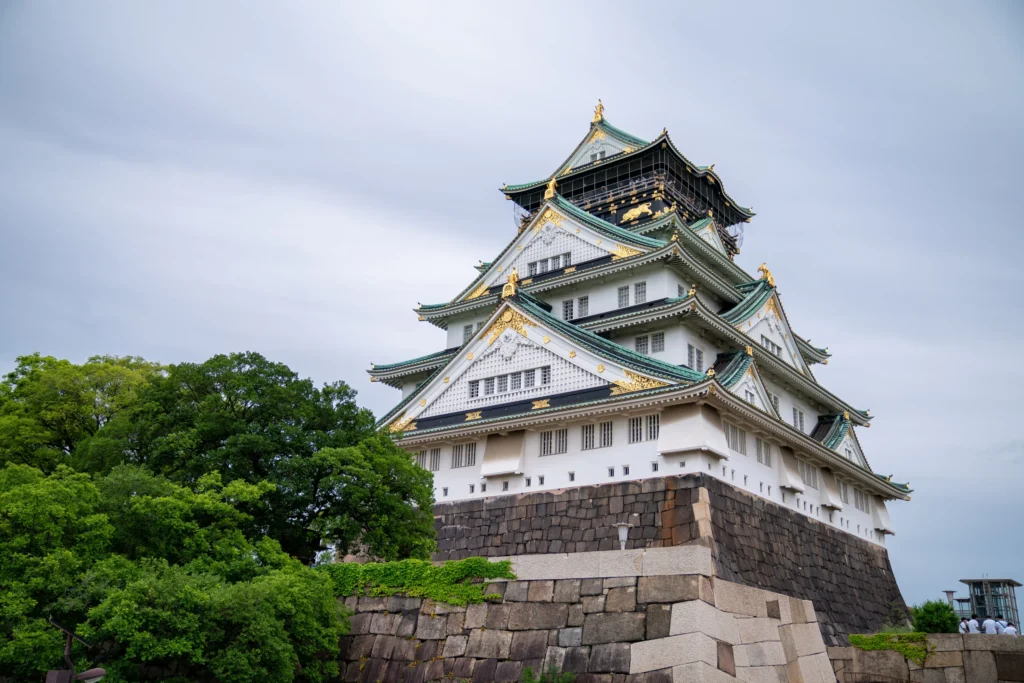
Days 13 and 14: Tokyo
Day 13: Tokyo
Shinkansen to Tokyo. Trains to Tokyo depart from Shin-Osaka station, slightly out of the way. The easiest way to get there is by taxi or train from Osaka’s central station.
For this last day in Tokyo, it’s ideal to revisit what struck you the most during this 14-day itinerary in Japan.
- Temples and shrines. You can return to Asakusa or discover a new place, such as Nezu-Jinja or Yasakuni-Jinja.
- The Neon City, Anime, manga. If Akihabara has left you the biggest impression, do not miss Nakano Broadway.
- The panoramas. There are 3 places from which you can observe the city from above: Tokyo SkyTree, Shibuya Sky, and Tokyo Tower.
Day 14: Return Flight
It’s already time to pack your bags and return home. Check your departure airport, as Narita Airport requires much more travel time than Haneda Airport.
Alternatives for a 14-day itinerary in Japan
We have not included in this 14-day itinerary to visit Japan certain activities which may seem essential for some travelers.
Universal Studios Osaka. This amusement park includes a particularly well-executed Harry Potter-themed roller coaster and a Super Nintendo World area.
Tokyo Disney Resort. For fans of amusement parks or Disney in general, going to Tokyo Disney Resort in Japan is a must. There are 2 parks: Disneyland Tokyo and Tokyo DisneySea. Some even consider Tokyo DisneySea to be the best park in the world (such as this American blogger).
Zoos. There are numerous zoos in Japan. However, foreigners are generally very disappointed. The enclosures and cages are often very small, and the animals look sad.
When traveling with the family and especially children, you can, for instance, remove Hiroshima from your 2-week itinerary in Japan and instead go to Tokyo Disney Sea or the Super Nintendo World.

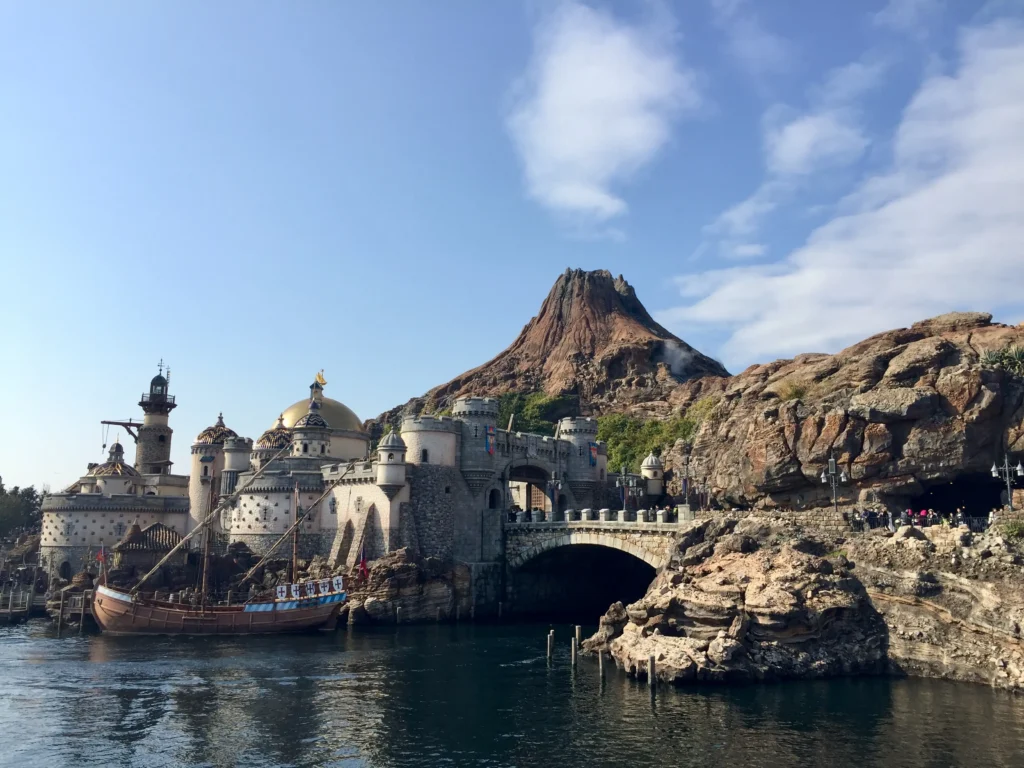
Preparing a 2-week itinerary in Japan
- Payments
- Transportation
- Free WiFi / Local SIM
- Etiquette
Payments in Japan
Credit card. The credit card is not always accepted. You can pay for the hotel, supermarkets, and some restaurants in shopping centers, but that’s it. For everything else, you need cash to buy a subway ticket, eat in a restaurant, buy a bottle of water from a vending machine, etc.
Cash. You should always have cash on you because a credit card is not usable everywhere, including in public transport or small restaurants. For this 14-day itinerary in Japan, always have 10,000 yen per person in cash.
Transportation
Let’s now see how to get around in Japan:
- The airplane to come to Japan
- The trains and the Shinkansen for traveling between cities
- Public transportation: Bus, Metro, Suburban Train
- Taxi
Planes to Japan
Finding the best tickets. From our experience, the best flight comparator remains Google Flights.
Booking on the airline’s website. Always book your ticket directly with the airline, whatever the comparator used. Avoid intermediaries as much as possible. In case of a flight change or other, you will thus speak directly to the airline, which often has better customer service than the intermediaries selling plane tickets.
Flight duration. The flight can be very long, depending on where you are coming from. If you want to sleep a little, avoid old, noisy planes. You can see the aircraft type on the flight comparator and when booking. Boeing 747 and 777 airplanes are very noisy. The quietest are the Airbus A350, A380, and Boeing 787. With a good flight, you will better enjoy your 14-day itinerary to visit Japan.
Narita (NRT) vs Haneda (HND). Tokyo has 2 major international airports: Narita Airport (NRT) to the east and Haneda (HND) to the south. Haneda Airport is much closer to downtown. It takes 20 minutes by taxi from Haneda to the city center and 1 hour from Narita. Therefore, prefer an arrival at Haneda airport to reduce the total travel time and the cost of the taxi on site. (More information on taxis below)
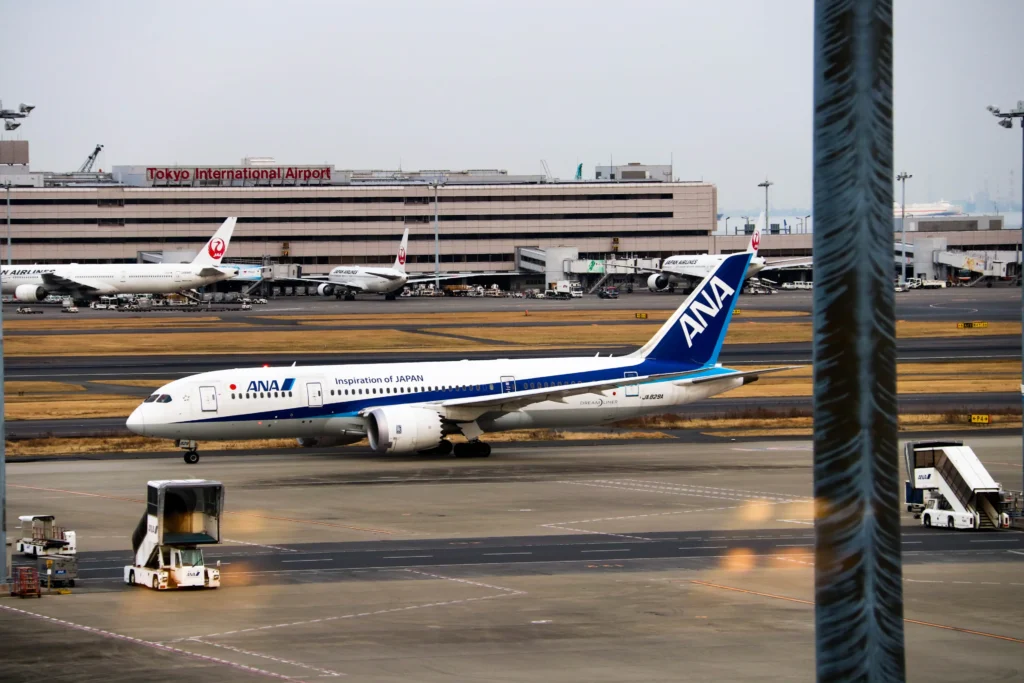
The trains for traveling between cities and the Shinkansen for this 14-day itinerary in Japan
Shinkansen. The Shinkansen is the Japanese high-speed train. It’s the fastest way to reach the different cities and visit Japan. Trains run about every 15 minutes between Tokyo and Osaka.
Japan Rail Pass (JR Pass). A popular option is to purchase an unlimited transportation pass in advance. The pass is valid for 7, 14, or 21 days. It allows you to take most trains, including some Shinkansen between Tokyo, Osaka, Kyoto, and Hiroshima. It is also valid on other routes like the Miyajima ferry or the Tokyo-Narita airport train.
Is the JR Pass more economical? The JR Pass can offer savings depending on the routes you plan to take. For example, you can take a 7-day JR Pass starting when you go to Kyoto and ending when you return to Tokyo, which is the period during which you will use the train the most. With this itinerary, you will spend over half of your 2 weeks in Japan outside Tokyo. You will then need a 14-day pass.
Purchase on-site. You can always buy your ticket on-site, at the station. The automatic ticket machines are translated into English. You can buy your tickets in advance, for example, on the first day when you arrive in Tokyo, and then use them five days later.
Reserved seat. If you want a guaranteed seat, you must book it in advance. This is valid whether you have a JR Pass or buy a ticket at the counter. Without a reserved seat booked in advance, you must go in one of the cars with “unreserved” seats and hope to find a place. To book a reserved seat, use an automatic ticket machine at the station, whether you have a JR Pass or not.
Nozomi is the name of the fastest trains (with the fewest stops) between Tokyo, Kyoto, and Osaka. These trains cannot be booked with the JR Pass; you must take another slower Shinkansen.
Restaurant Car. There is no restaurant car. There is a vendor with a trolley passing through, but it does not offer any hot products. There are several Ekiben sellers in the station, a takeaway bento. Everything is cold. We therefore recommend eating before or after the trip, and possibly taking a drink to take away from a café at the station.
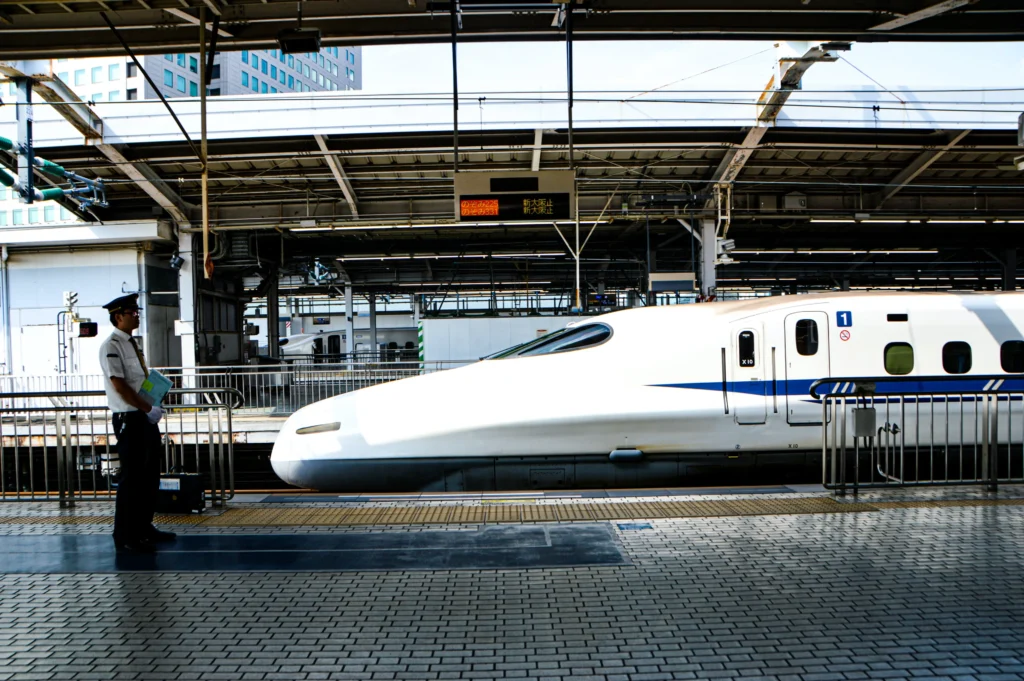

How to take public transportation in Japan, in Tokyo, Kyoto, Osaka, and Hiroshima?
Google Maps. All buses and subways are indicated on Google Maps. It’s a very reliable way to see the available transportation options. The price is sometimes even indicated.
Automatic Machines. Automatic machines sell metro tickets at each station. They are often translated into English. You enter the station where you want to go, the machine calculates the ticket amount, and you pay. Most machines only accept cash, not credit cards. Besides, 1 and 5 yen coins are often refused.
Ticket by amount. In Japan, you do not buy a ticket to a specific place. You buy an “amount” that allows you to travel for x stations. For example, to go from Asakusa to Akihabara, you buy a ticket for 180 yen which allows you to enter at Asakusa and exit at Suehirocho. You may come across some older ticket machines where you can only enter an amount.
Women’s Car. In the metro and suburban trains, a car is often reserved for women. Although Japan is a safe country, there is a lot of groping or sexual harassment in crowded places. Generally speaking, avoid public transportation during rush hour.
Bus and Tram. On the bus, you have to pay in cash, so you should always have change. You pay the ticket amount when exiting the bus. There may be an attendant on the bus or tram who makes the change. On this 2-week itinerary in Japan, you may have to take the bus or the tram in smaller cities like Kyoto and Hiroshima.
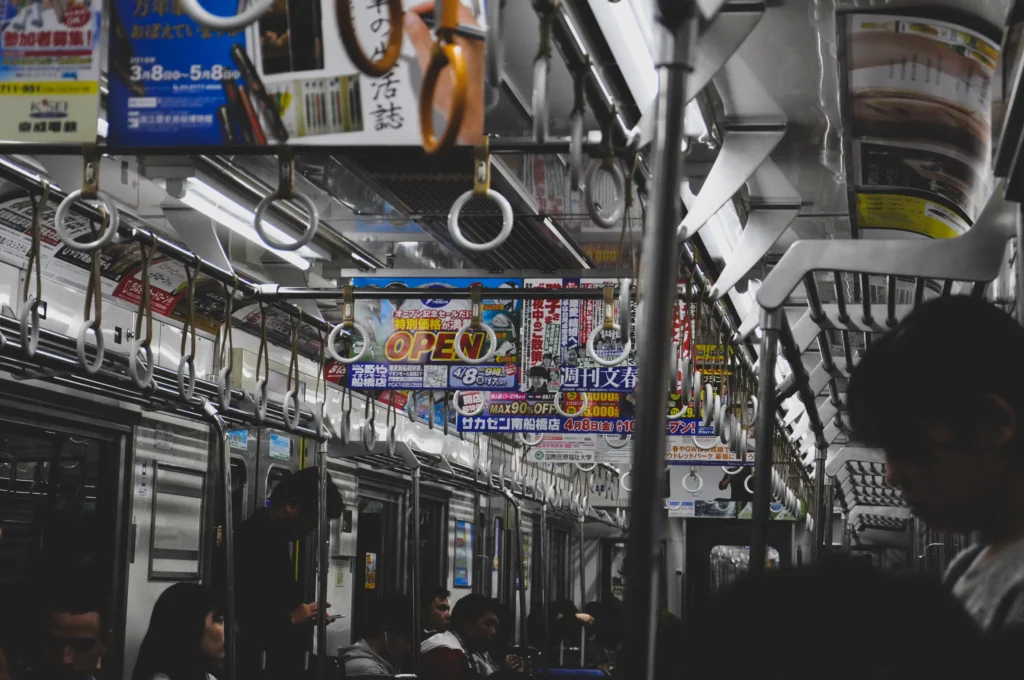
The Taxi in Japan
Uber. Uber operates in Japan with 2 services: a “Taxi” service that calls a real official taxi and a private chauffeur service. The “Taxi” service is often cheaper, as the actual cost of the ride is based on the taximeter. It works pretty well, and there are often drivers available quickly. Uber will often be helpful to you during this 14-day itinerary for visiting Japan.
Cost. Taxis are not cheap. They are especially convenient when there is no direct route by public transportation. In Tokyo, a complicated one-hour journey by public transportation can be reduced to a 20-minute taxi ride.
Automatic Doors. All taxis in Japan have automatic doors, which open and close by themselves. This includes sliding doors and conventional car doors. One should not try to open the door, as it might break the system; let the driver handle it. You will also encounter some taxis with a broken system, where the driver will come to open and close the door.
2 Models. There are 2 main taxi models in Japan: an older sedan from the 1990s and a newer wagon built to the specifications of the Japanese government. The newer model is mainly present in Tokyo and is more comfortable. You will not have a choice of the model, whether at the airport or on Uber.

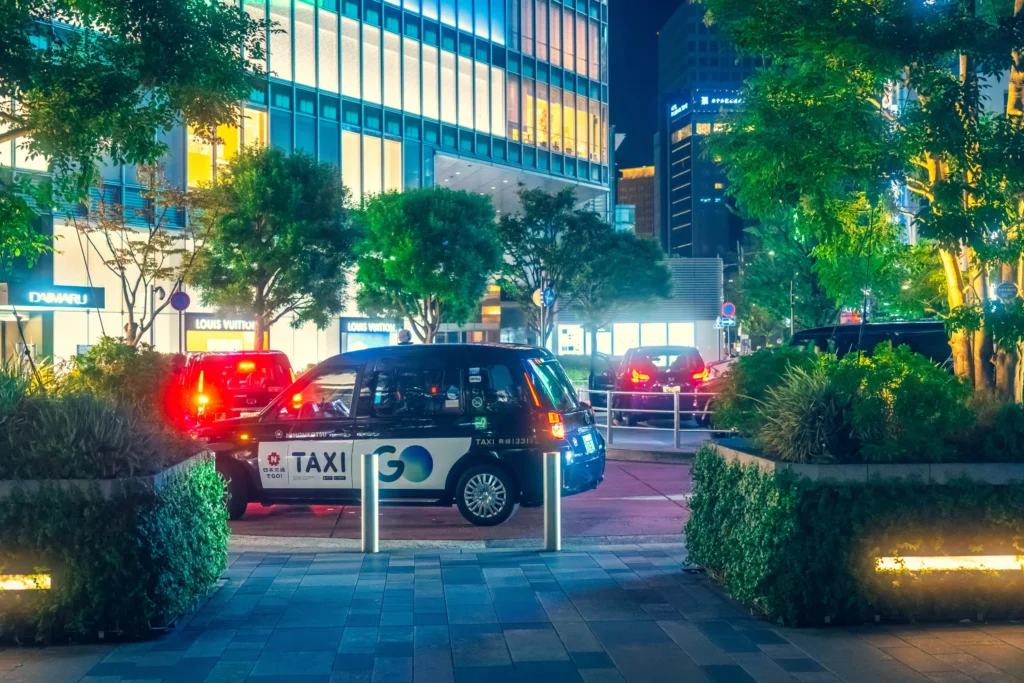
Free WiFi or Local SIM for visiting Japan?
Having an internet connection during your trip to Japan is very useful. Firstly, it’s essential for taking public transport. Without Google Maps, it’s impossible.
Free WiFi. Free WiFi is often available in Japan. Each WiFi network has its sign-up process, so it’s a hassle. You often have to confirm the creation of an account by checking your mailbox. Furthermore, the connection gets cut off after 30 minutes. It can help a bit, but it’s better not to rely on it. Since you will be staying over 2 weeks in Japan, it is better to add landmarks to your itinerary instead of wasting hours handling the Free WiFi every day.
Roaming. You can use your mobile data in Japan, but it’s costly. Prices depend on your provider. Some providers charge more than $ 1,000 for a Gigabyte.
WiFi Box. You can rent a WiFi-4G box locally or pre-book it to have it as soon as you arrive. The operation is simple: the box contains a SIM card and connects to 4G. On your phone, you connect to the box’s WiFi network. The rental price includes data, so there are no additional costs to expect. The downside is that it’s yet another device to charge at night and can run out of battery in the middle of the day.
Local SIM. You can buy a prepaid SIM card with a 4G plan. To be more modern, choose an eSIM, which can be set up with a simple QR code. There is no need to change the SIM; it works directly. You can purchase it from home and activate it once in Japan. We always use “Airalo” when we need eSIMs abroad, which works well. Therefore, we recommend using an eSIM for the entire duration of this 14-day itinerary to visit Japan. See prices here.
Etiquette in Japan
Speak Japanese! It’s always better to try to speak a few words in the local language in a foreign country, and this is true in Japan. Just saying Hello and Thank You is already a lot. Here are the two words to know for this 14-day itinerary in Japan.
- Hello: Konnichiwa
- Thank You: Arigato gozaimasu
Tipping. In Japan, tipping is not practiced. It could even be frowned upon. Servers are paid normally; there is no need for compensation. Therefore, the service should always be excellent. It also means they will change you down to the last Yen. It’s cumbersome because it’s not easy to get rid of those 1 and 5 Yen coins, which are not accepted by vending machines (respectively, $0.005 and $0.03). You may have remaining coins at the end of your 2-week itinerary in Japan. To dispose of them, you can donate them to charity in a box at the airport.
Queues. There’s waiting for everything in Japan: restaurants, the metro, buses, etc. A short queue can quickly mean a 30-minute wait standing up.
- Visits: We recommend booking skip-the-line tickets in advance. Get them long enough in advance because some activities, such as TeamLab Planets and Shibuya Sky at sunset, are sold out very early.
- Restaurants: there are almost always chairs to wait outside the restaurant when the restaurant is in a closed place (mall, underground). There are 2 types of queues: 1. where you write your name on a piece of paper with the number of people and a waiter calls progressively, and 2. where you wait one behind the other in front of the entrance.
The best time to visit Japan with a 14-day itinerary
Spring and autumn are the best time to do this 2-week itinerary in Japan. Conversely, the worst time is during Golden Week.
Golden Week. Three public holidays are contiguous, and another is very close. The Japanese then take a whole week off without using many days. Golden Week takes place at the end of April/start of May. During Golden Week, there are many Japanese tourists in addition to foreigners. Tourist spots and transport are crowded, and hotels are more expensive. It’s preferable to avoid going to Japan during this season.
The cherry blossoms. Some places take on an entirely different dimension when the cherry trees bloom. It’s splendid. The Japanese also love this season. That’s why tourist spots with cherry trees are crowded during the blooming period. So it’s rather a time to avoid. The cherry blossom season in Japan lasts two weeks and usually starts mid-March.
Spring and autumn are the best seasons to visit Japan. The weather is mild, and the colors are magnificent. In spring, it can be useful to avoid Golden Week and the cherry blossom season to avoid the crowds.
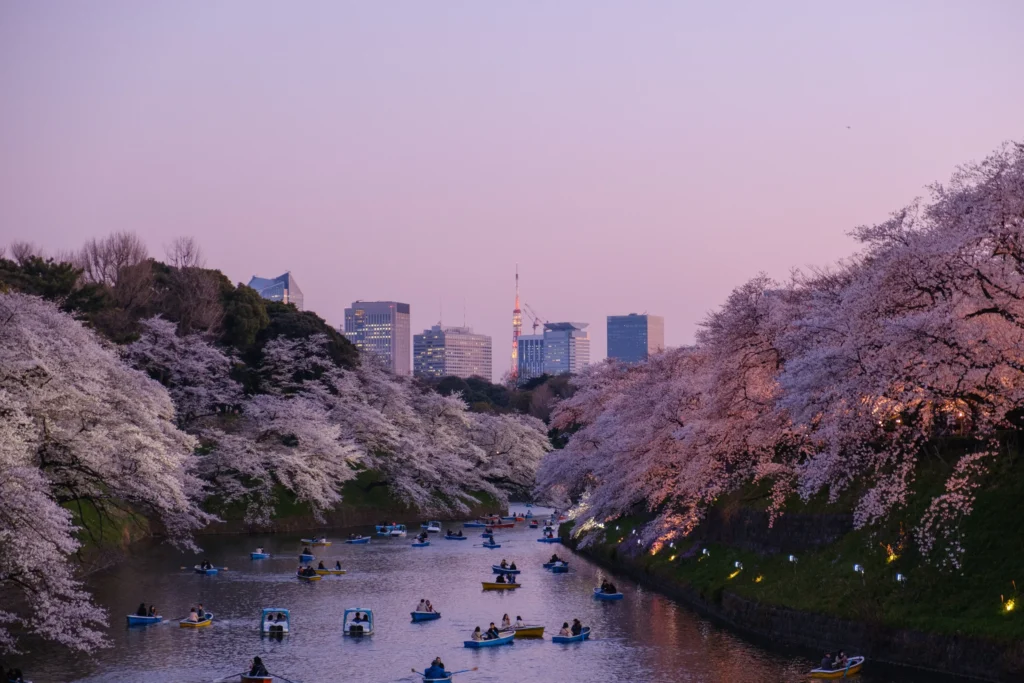
A trip to Japan is a marvelous experience, and this 14-day itinerary will allow you to discover several exciting sides, from Tokyo to Hiroshima via Mount Fuji, Kyoto, and Osaka. 2 weeks in Japan can be enough if you plan your itinerary and already know what you want to do and see.
